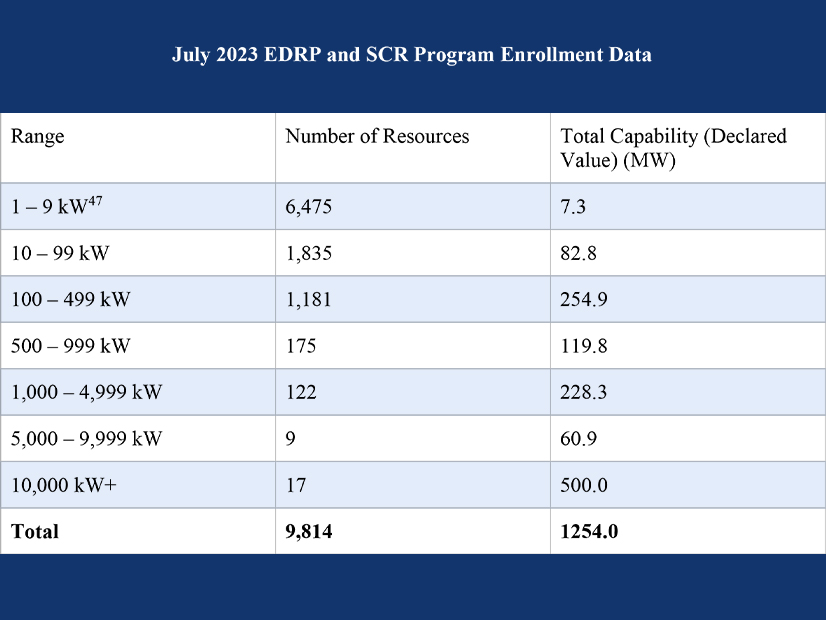NYISO told FERC on Thursday the software development and testing necessary to implement its distributed energy resource participation model will be ready by Sept. 1 (ER23-2040).
The ISO had requested an effective date of Dec. 15 for the revisions it had submitted in June, later than it thought necessary but proposed “out of an abundance of caution.”
“Prompt commission action will enable DER and aggregations to begin enrolling in the NYISO’s markets by the end of 2023,” the ISO said in response to FERC staff’s deficiency letter, which sought more information on the proposal. (See FERC Seeks More Info on NYISO DER Aggregation Proposal.)
FERC had approved NYISO’s participation model in 2020, but the ISO proposed modifications this year to better align the model with its new software and ease the burden on staff. Among those changes was a controversial 10-kW minimum for DERs in an aggregation to participate. The commission directed the ISO to explain how it had come to the 10-kW figure.
NYISO said it had become apparent that the new manual processes developed to enroll and track DER and aggregations “would be unmanageable with a high volume of DER penetration.” It said it analyzed enrollments in its existing Emergency Demand Response Program and Special Case Resource program as comparable proxies to the DER participation model. Of the 9,814 resources in the two programs as of July 1, 6,475 are less than 10 kW, it said. At a combined 7.3 MW, they represent just 0.58% of the programs’ total capability.
“NYISO does not currently have sufficient resources to timely and efficiently administer the monthly enrollment processes required for the DER and aggregation participation model if several thousand end-use customers seek to enroll in the markets at once,” the ISO wrote. “The costs associated with building the infrastructure to enable such participation include more staff, more software and the development of new market rules that will result in less oversight of small DER.”
FERC also asked NYISO to explain what it considers a DER “material modification,” address its proposed DER metering and telemetry requirements, justify why it will use the lowest cost DER as an aggregation’s reference level and explain why it would eliminate locational-based marginal pricing and bid-based reference levels for aggregations.
NYISO said a material modification constitutes “any change to the physical and operating characteristics of the DER” and included nearly 40 examples that would trigger a review, including a change of address, ownership or capability.
The ISO also responded that its metering rules ensure consistency among similar resources and do not give one participation model, whether aggregation or standalone, an undue advantage.
Additionally, NYISO justified its reference levels revisions by claiming the proposals will help the ISO better understand aggregation market and bidding behaviors, as the lowest-cost DER level incentivizes aggregations to be available more often, while switching to cost-based references will allow the ISO to better study relevant financial data.


